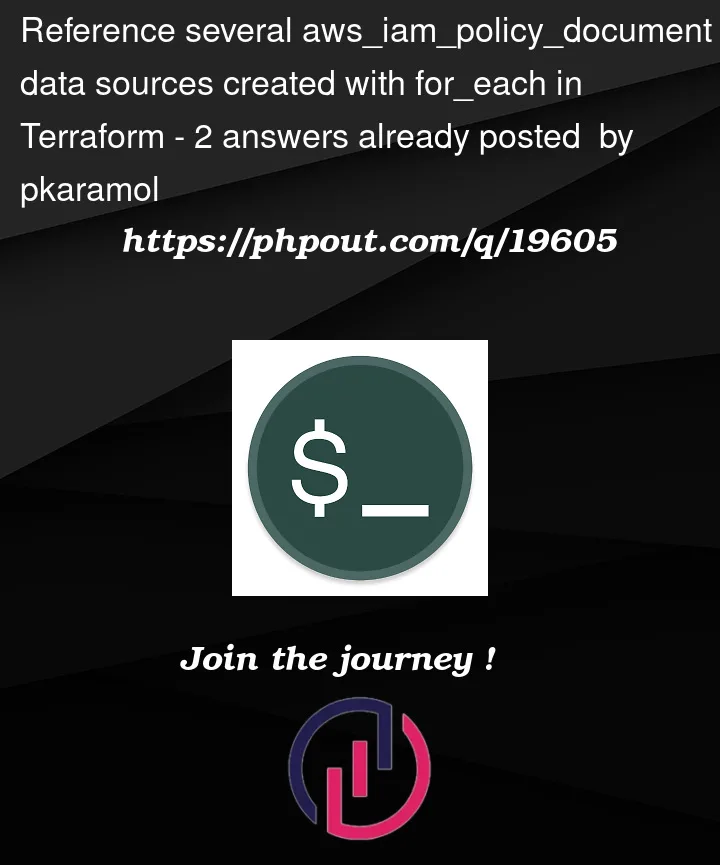I want to create multiple aws_iam_policy_document resources with for_each, to be later assumed by several roles, as follows:
# Policy to allow services to assume the role
data "aws_iam_policy_document" "this" {
for_each = var.lambda_configuration
statement {
actions = ["sts:AssumeRole"]
principals {
type = "Service"
identifiers = [
"lambda.amazonaws.com",
"apigateway.amazonaws.com",
]
}
}
}
# IAM role for executing the Lambda function
resource "aws_iam_role" "this" {
for_each = var.lambda_configuration
name = "my_lambda_${each.key}_Executor_Role"
description = "Role for executing my_lambda-${each.key} function"
assume_role_policy = data.aws_iam_policy_document.assume_role_policy_[each.key].json
}
How should I interpolate this
assume_role_policy = data.aws_iam_policy_document.assume_role_policy_[each.key].json
to make the correct matching with the roles?




2
Answers
The correct syntax:
Note that this is not interpolation, as you mentioned in your question. It is just a value lookup. And I have no idea where you got
assume_role_policy_from, but that is not valid HCL syntax.This seems like a good situation for Chaining
for_eachBetween Resources, which (subjectively) tends to lead to a configuration where it’s easier for an unfamiliar reader to follow the way data is flowing between the resources.Using the first resource itself as the
for_eachfor the second one means that the two will always have exactly the same keys (because a resource withfor_eachappears in expressions as a map of objects using the keys from thefor_eachmap), and thateach.valueinside the second block refers to the corresponding instance of the first block.This has essentially the same behavior as using the index operator to select an element from
data.aws_iam_policy_document.thisusingeach.key, but makes the relationship between these two resources a little more direct and so (again, subjectively) easier to read and maintain in future.